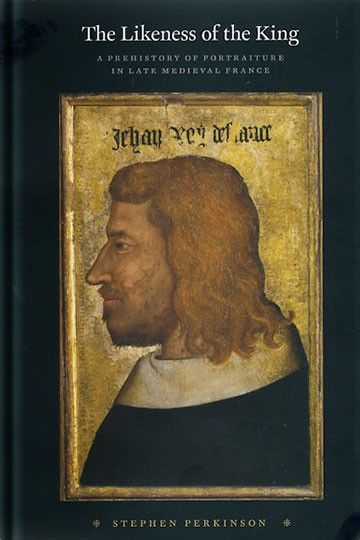
- Publisher: University of Chicago Press
- Available in: Hardcover
- ISBN: 9780226658797
- Published: January 1, 2009
Anyone who has strolled through the halls of a museum knows that portraits occupy a central place in the history of art. But did portraits, as such, exist in the medieval era? Stephen Perkinson’s The Likeness of the King challenges the canonical account of the invention of modern portrait practices, offering a case against the tendency of recent scholarship to identify likenesses of historical personages as “the first modern portraits.”
Unwilling to accept the anachronistic nature of these claims, Perkinson both resists and complicates grand narratives of portraiture art that ignore historical context. Focusing on the Valois court of France, he argues that local practice prompted shifts in the late medieval understanding of how images could represent individuals and prompted artists and patrons to deploy likeness in a variety of ways. Through an examination of well-known images of the fourteenth- and early fifteenth-century kings of France, as well as largely overlooked objects such as wax votive figures and royal seals, Perkinson demonstrates that the changes evident in these images do not constitute a revolutionary break with the past, but instead were continuous with late medieval representational traditions.
Julian Gardner, National Gallery of Art, Washington, DC | Art Bulletin
“Perkinson writes illuminatingly on the ‘discourse of likeness’ in the late Middle Ages. . . . [T]his penetrating, argumentative, and learned book leaves one wishing for more [and] is a tribute to its intellectual candor and conviction.”
Joan A. Holladay, University of Texas at Austin
“Stephen Perkinson’s book is a tour-de-force. The topic itself has large implications; not only does this discussion go back to the beginnings of the discipline of art history, but it investigates the very nature of image-making in the later Middle Ages. Starting with the mid-fourteenth-century image of Jean II, King of France, often said to be the first independent portrait, Perkinson downplays the thorny issue of physiognomic resemblance and looks at the issue of likeness more broadly in a series of wide-ranging, innovative, and highly productive inquiries. This subtle, sensitive study succeeds in examining this material on its own terms and in the context of its own times.”
Thomas Dale, University of Wisconsin-Madison
“Perkinson offers a refreshing account of the theories and practices of portraiture in late medieval France, that challenges us to rethink the role of physiognomic likeness as one among competing representational strategies. He convincingly explains renewed interest in mimetic representation within a rich interdisciplinary context, encompassing optical and physiognomic sciences, literary and theological theories of knowledge, magical associations of simulacra, and the competitive conditions of artistic patronage at French aristocratic courts. He shows that celebrated artists such as the Limbourg brothers produced recognizable, veristic portraits to demonstrate their skill as well as their own personal loyalty and that of their patrons to the ruling elites.”
Rebecca Zorach, University of Chicago
“A lively, well-researched, and insightful work of scholarship on late-medieval portraiture and its cultural and intellectual context. The Likeness of the Kingprovides a strong account of late-medieval aesthetics and specific, concrete examples of image-making and the often political needs it served. It offers smart handling of literary, philosophical, and archival sources; close and insightful reading of images; and a willingness to counter received ideas.”
Winner of the Journal of the History of Ideas: JHI-Morris D. Forkosch Prize